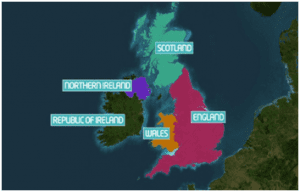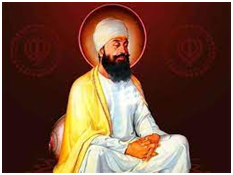POLITY AND GOVERNANCE
1. HOW IS A NATIONAL PARTY DEFINED?
TAGS: GS-II- POLITY AND PRELIMS
THE CONTEXT:Recently, the Election Commission recognised the Aam Aadmi Party (AAP) as a national party, while revoking that status of the All India Trinamool Congress, Nationalist Congress Party (NCP) and the Communist Party of India (CPI).
THE EXPLANATION:
- The Commission also revoked the state party status granted to RLD in Uttar Pradesh, BRS in Andhra Pradesh, PDA in Manipur, PMK in Puducherry, RSP in West Bengal and MPC in Mizoram.
- The Commission said that NCP and Trinamool Congress will be recognised as state parties in Nagaland and Meghalaya respectively based on their performance in the recently concluded Assembly elections.
- The BJP, Congress, CPI(M), Bahujan Samaj Party (BSP), National People’s Party (NPP) and the AAP are the remaining national parties now.
What is a national party?
- The name suggests that a national party would be one that has a presence ‘nationally’, as opposed to a regional party whose presence is restricted to only a particular state or region.
- National parties are usually India’s bigger parties, such as the Congress and BJP. However, some smaller parties are also recognised as national parties. A certain stature is sometimes associated with being a national party, but this does not necessarily translate into having a lot of national political clout.
- Some parties, despite being dominant in a major state — such as the DMK in Tamil Nadu, BJD in Odisha, YSRCP in Andhra Pradesh, RJD in Bihar, or TRS in Telangana — and having a major say in national affairs, remain regional parties.
How is a national party defined?
- The ECI has laid down the technical criterion for a party to be recognised as a national party. A party may gain or lose national party status from time to time, depending on the fulfilment of these laid-down conditions.
- As per the ECI’s Political Parties and Election Symbols, 2019 handbook, a political party would be considered a national party if:
- it is ‘recognised’ in four or more states; or
- if its candidates polled at least 6% of total valid votes in any four or more states in the last Lok Sabha or Assembly elections and has at least four MPs in the last Lok Sabha polls; or
- if it has won at least 2% of the total seats in the Lok Sabha from not less than three states.
Where does the AAP fit into this scheme?
- The AAP is in power with big majorities — and very large vote shares — in Delhi and Punjab. In the Goa Assembly elections in March last year, it received 6.77% of the vote.
- This meant that going into the Gujarat-Himachal elections towards the end of 2022, the party already fulfilled the criteria for recognition as a state party in three states. It then required 6% of the vote in the Assembly elections in either Himachal or Gujarat to be recognised in a fourth state — which would qualify it for recognition as a national party.
- While the AAP got only 1% of the vote in Himachal, the almost 13% vote it got in Gujarat was more than double required to be recognised as a state party there. That made it four states.
INTERNATIONAL RELATIONS
2. WHAT IS GOOD FRIDAY AGREEMENT?
TAGS: GS-II-INTERNATIONAL RELATIONS- PRELIMS
THE CONTEXT:Recently, US President Joe Biden is visiting Belfast, the capital of Northern Ireland, to mark the 25th anniversary of the Good Friday Agreement.
THE EXPLANATION:
What is the Good Friday Agreement?
- The Good Friday Agreement was signed on April 10, 1998, between factions of Northern Ireland, and the governments of Britain and Ireland, to end decades of violence in Northern Ireland among those who wished to remain with the United Kingdom (UK) and those who wanted to join Ireland.
- The negotiators included then British Prime Minister Tony Blair, then Irish Prime Minister Bertie Ahern, George Mitchell, a former Democratic senator who acted as the envoy of then US President Bill Clinton, and eight parties from Northern Ireland.
What were The Troubles?
- Northern Ireland was created in May 1921 by partitioning Ireland, and consists of the six northeastern counties of the island. In 1922, the rest of Ireland gained independence from the British (today’s Republic of Ireland, with its capital in Dublin).
- Northern Ireland remained with the United Kingdom, but tensions simmered between the side loyal to the Crown, mostly Protestants, and the faction wanting to join the Republic, mostly Catholics.
3. EXPLAINED: THE CONFLICT BETWEEN ISRAEL AND SYRIA
TAGS: GS-II-INTERNATIONAL RELATIONS
THE CONTEXT:Recently, Israeli jets have bombarded Gaza and Lebanon in response to Palestinian rocket fire over the two territories. Earlier the Palestinian factions in southern Lebanon had launched 34 rockets towards north-western Israel– the largest cross-border barrage since the 2006 war between Hezbollah and Israel.
How did the current round of violence begin?
- Palestinian groups and Hezbollah have been angered by an Israeli police raid on Jerusalem’s al-Aqsa mosque, the third holiest site in Islam.
- The raid took place against a backdrop of increasing violence in the West Bank, the overlap of the Muslim holy month of Ramadan with the beginning of the Jewish Passover holiday, and the formation in December (2022) the most right-wing and anti-Arab government in Israel’s history.
What is Hezbollah?
- Hezbollah is the most powerful non-state actor in the Middle East. It was formed about 40 years ago in Lebanon’s Bekaa Valley, nominally as a bulwark to Israel’s presence in Lebanon, though it quickly became opposed to its arch-foe’s very existence.
- The group is financially and politically beholden to its backer, Iran, and is the most important arm of Iran’s foreign policy projection in the Middle East.
- Its members are Shia Muslims, whom regional Sunni leaders consider a formidable challenge to their own ambitions – so much so that they have been prepared to draw closer to Israel to combat Hezbollah threats.
How are events in Syria linked to the crisis?
- Israel has repeatedly attacked targets linked to Iran inside Syria. Iran, through proxies, including Hezbollah and the Syrian army, has used Syrian bases to smuggle and store parts for precision guidance systems to be fitted to crude rockets and for importing drones that could be used to fight Israel.
- Combatting these threats has been a preoccupation of the Israeli army, and has led to several thousand attacks inside Syria in recent years, many from airstrikes. At times Hezbollah members have been killed, raising tensions on the border.
- It is believed that at least five Hezbollah members were killed in Syria during the recent airstrikes.
What has been happening in Gaza?
- Palestinian factions in Gaza have been under pressure to respond to the violence in al-Aqsa, with rockets fired into southern Israel thought to be its comeback. The fire and the Israeli response has been limited and does not appear to herald a broader flare up.
What might happen next?
- As of now, the threat in southern Lebanon and northern Israel appears to have passed. Israel is content to stick to a charade that Hezbollah were not involved in recent rocket strikes, and Hezbollah will let the Israeli attacks on Palestinians slide. The clashes, however, were a wake-up call to just how close all-out war could be.
4. WHAT IS THE UN DEMOCRACY FUND?
TAGS: GS-II-INTERNATIONAL RELATIONS- PRELIMS
THE CONTEXT: Recently, India stated that it has no objections to the UNDEF giving grants to NGOs funded by George Soros. However, it has put the same NGOs on the watchlist in India.
About:
- The United Nations Democracy Fund (UNDEF) was created by the then UN Secretary-General Kofi A. Annan in 2005 as a United Nations General Trust Fund to support democratization efforts around the world.
Functions:
- UNDEF supports projects that strengthen the voice of civil society, promote human rights, and encourage the participation of all groups in democratic processes.
- The large majority of UNDEF funds go to local civil society organizations—both in the transition and consolidation phases of democratization.
Funding:
- UNDEF subsists entirely on voluntary contributions from Governments, it reached almost 170 million dollars in contributions and counts more than 40 countries as donors, including many middle- and low-income States in Africa, Asia and Latin America. The United States remain the largest donor.
Governance:
- As a secretary-General’s Trust Fund located within the UN Secretariat (New York City, USA) UNDEF falls under the direct authority of the UN Secretary-General.
- The secretary-general is guided by the UNDEF Advisory Board, which consists of the seven biggest UNDEF donor countries—as of 2010, the United States, India, Japan, Qatar, Germany, Australia and Spain.
India and United Nations Democracy Fund (UNDEF)
- India is a founding partner of the UN Democracy Fund (UNDEF).
- India plays a prominent role in the UNDEF as a long-standing member of the Advisory Board, its apex governing body. Since its inception, India has contributed over $32 million to the Fund and remains its third-largest contributor, underscoring India’s deep commitment to democratic values.
PRELIMS PERSPECTIVE
5. REMEMBERING SHRI GURU TEGH BAHADUR, THE NINTH GURU OF THE SIKHS
TAGS: PRELIMS PERSPECTIVE
THE CONTEXT:Guru Tegh Bahadur Parkash Purab 2023 is celebrated to mark the birth of the Ninth Guru of Sikhism, Guru Tegh Bahadur and to remember his life and teachings. This year it was observed on April 11, 2023.
THE EXPLANATION:
Who is Guru Tegh Bahadur Ji ?
- Guru Tegh Bahadur Ji is the ninth Sikh Guru, was born on 01 April 1621 in Amritsar, to the sixth Guru Hargobind Ji and Mata Nanaki Ji.
- He grew up to be a brave young man and displayed considerable courage in the battles against Mughals. His father gave him the title of “Tegh Bahadur”, meaning “Mighty of Sword”, in recognition of his bravery.
- He is widely regarded as the saviour guru. Guru Tegh Bahadur is considered to be an honourable scholar and poet who greatly contributed to the Sri Guru Granth Sahib, the holy book of Sikhism.
Parkash Purab Significance
- The Parkash Purab is celebrated to mark Guru Tegh Bahadur’s birth anniversary. Born as Tyaga Mal, he is widely regarded as the saviour guru who relentlessly fought for religious freedom.
- To celebrate the birth anniversary of Guru Tegh Bahadur, people, especially the Sikh community, holds religious processions, organise Shabad Kirtans and read about his life’s work.
Guru Tegh Bahadur’s martyrdom:
- The day of Guru Tegh Bahadur’s martyrdom is often referred to as Shaheedi Diwas. Gobind Singh, the eleventh Guru, was his biological son. His execution and cremation sites in Delhi, Gurudwara Sis Ganj Sahib and Gurudwara Rakab Ganj Sahib, later became Sikh sacred places.
- At birth, his name was Tyaga Mal. He also learned Gurmukhi, Hindi, and Sanskrit from a respected Sikh scholar. In Bakala, Guru Tegh Bahadur spent the majority of his time in meditation. The sudden passing of Guru Harkrishan left the Sikhs wondering who would be the next Sikh guru.
- When Guru Har Krishan was asked who would succeed him as he was on his deathbed, it is said that he simply stated, “Baba” and “Bakala.” This indicated that the next Guru will be from Bakala.


